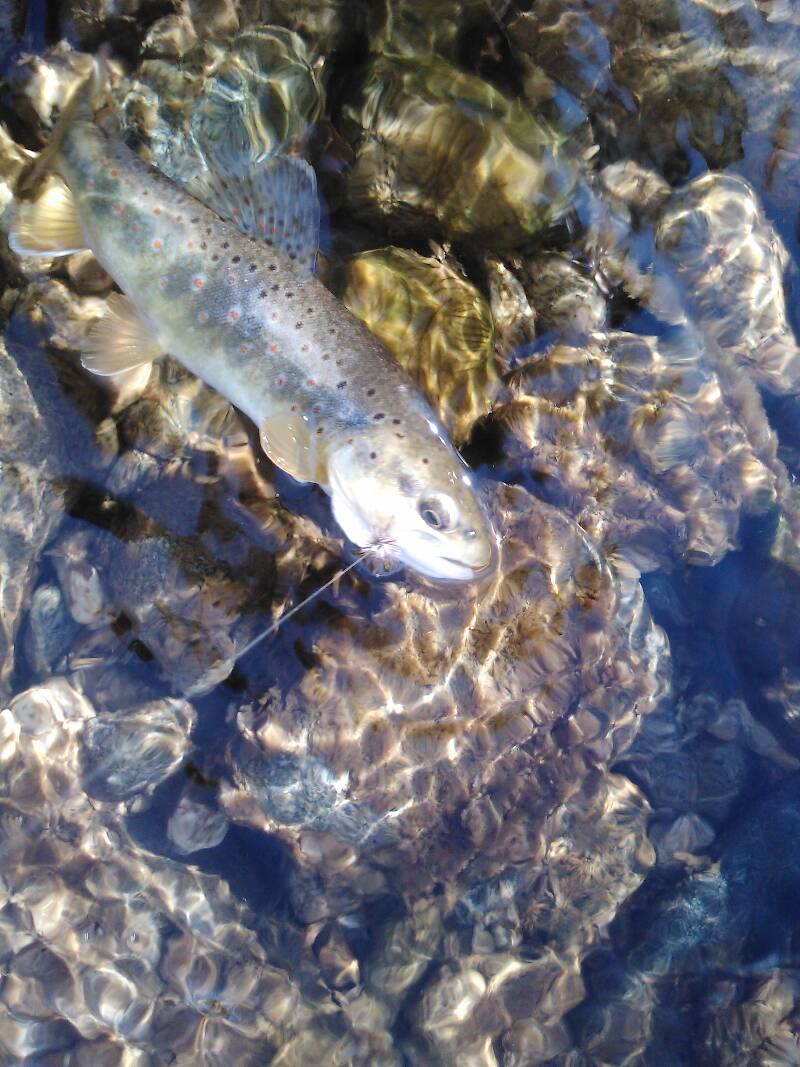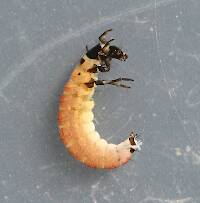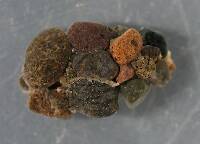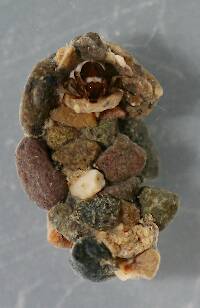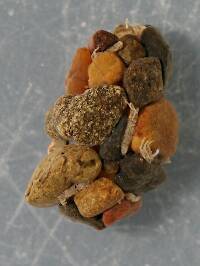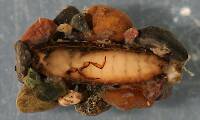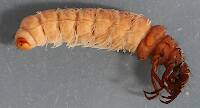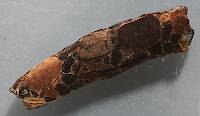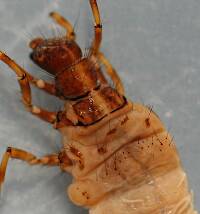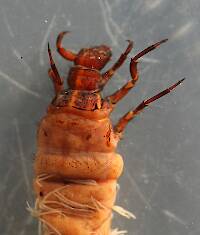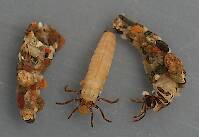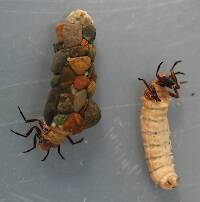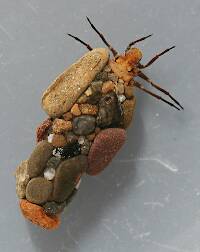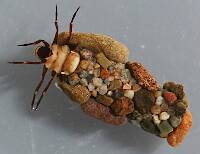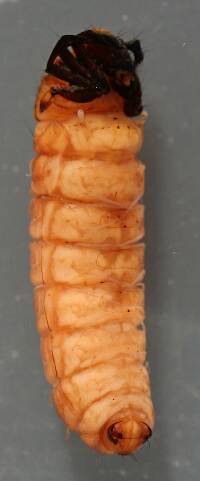
Salmonflies
Pteronarcys californica
The giant Salmonflies of the Western mountains are legendary for their proclivity to elicit consistent dry-fly action and ferocious strikes.
Featured on the forum

I was not fishing, but happened to be at an unrelated social event on a hill above this tiny creek (which I never even saw) when this stonefly flew by me. I assume it came from there. Some key characteristics are tricky to follow, but process of elimination ultimately led me to Sweltsa borealis. It is reassuringly similar to this specimen posted by Bob Newell years ago. It is also so strikingly similar to this nymph from the same river system that I'm comfortable identifying that nymph from this adult. I was especially pleased with the closeup photo of four mites parasitizing this one.

Troutnut is a project started in 2003 by salmonid ecologist Jason "Troutnut" Neuswanger to help anglers and
fly tyers unabashedly embrace the entomological side of the sport. Learn more about Troutnut or
support the project for an enhanced experience here.
PaulRoberts on Feb 2, 2018February 2nd, 2018, 1:39 am EST
https://www.youtube.com/watch?v=AsUxY7DnSFY
Obviously shot out of the water. Would love to see how they distribute underwater. Seems like a great place for a trout fry to station. Which also suggests why the eggs are so often laid beneath larger substrate out in current. Trout fry and other tiny fry would be relegated to quiet currents near shorelines. Wonder how often these hatching larvae feed sculpins and dace?
Obviously shot out of the water. Would love to see how they distribute underwater. Seems like a great place for a trout fry to station. Which also suggests why the eggs are so often laid beneath larger substrate out in current. Trout fry and other tiny fry would be relegated to quiet currents near shorelines. Wonder how often these hatching larvae feed sculpins and dace?
Iasgair on Feb 5, 2018February 5th, 2018, 11:32 am EST
Looked like a sci-fi movie gone wrong, LOL.
But I see your point. I can see trout fry wanting to station in areas with these around.
But I see your point. I can see trout fry wanting to station in areas with these around.
Martinlf on Feb 6, 2018February 6th, 2018, 4:12 pm EST
Awww, the little buggers look cute when they hatch. Cool.
"He spread them a yard and a half. 'And every one that got away is this big.'"
--Fred Chappell
--Fred Chappell
Millcreek on Feb 8, 2018February 8th, 2018, 1:45 am EST
I remember watching some rainbow fingerlings and California roach feeding in a small pool.Instead of facing into the current as was usual they were facing the bottom and picking up something there. I got curious and waded out for a couple of small rocks. Washing them off and looking at them under a microscope, I found hundreds of small baetid and caddisfly larvae about 1-2 mm.
"If we knew what it was we were doing, it would not be called research, would it?"
-Albert Einstein
-Albert Einstein
PaulRoberts on Feb 8, 2018February 8th, 2018, 3:39 am EST
Neat how fish can find what's good for them. It's more varied than a lot of people probably suspect.
Quick Reply
Related Discussions
Topic
Replies
Last Reply
0
Mar 9, 2008
by BGrnFlyfish
by BGrnFlyfish
17
Feb 11, 2014
by Crepuscular
by Crepuscular
Re: Some recent nighttime views from Fairbanks, AK (aurora & eclipse!) 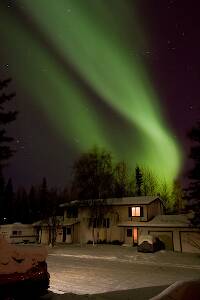
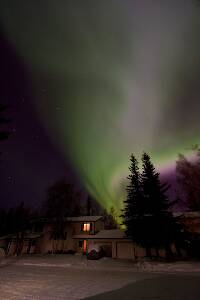

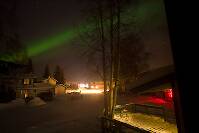
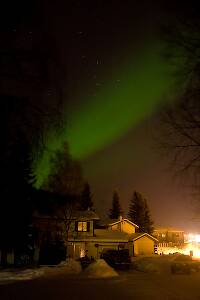
In the Photography Board by Troutnut
+ 3





In the Photography Board by Troutnut
4
Mar 2, 2008
by JAD
by JAD



